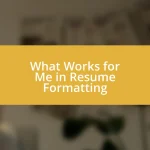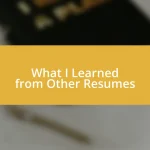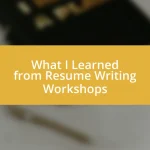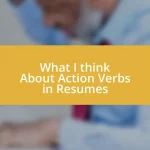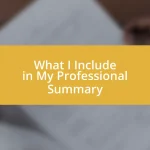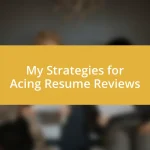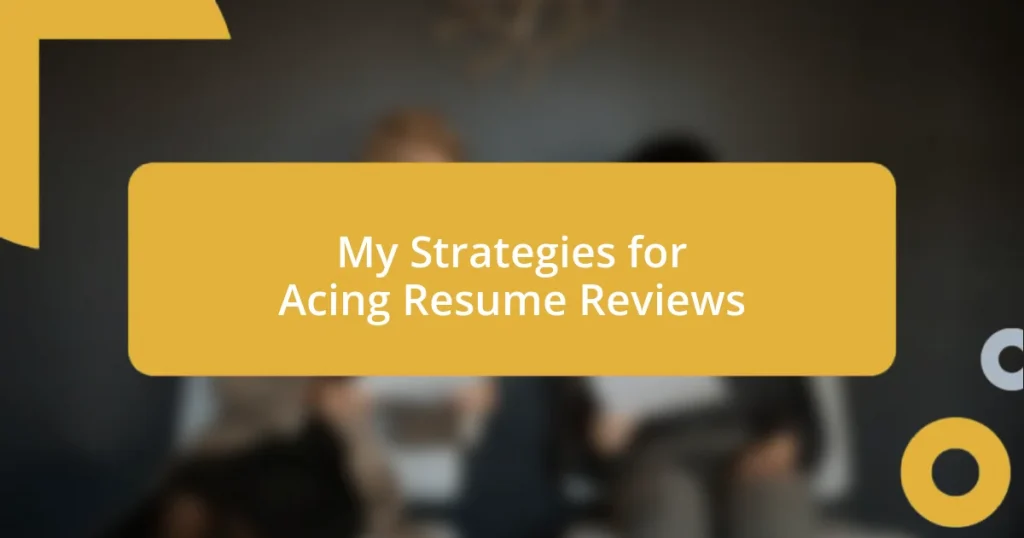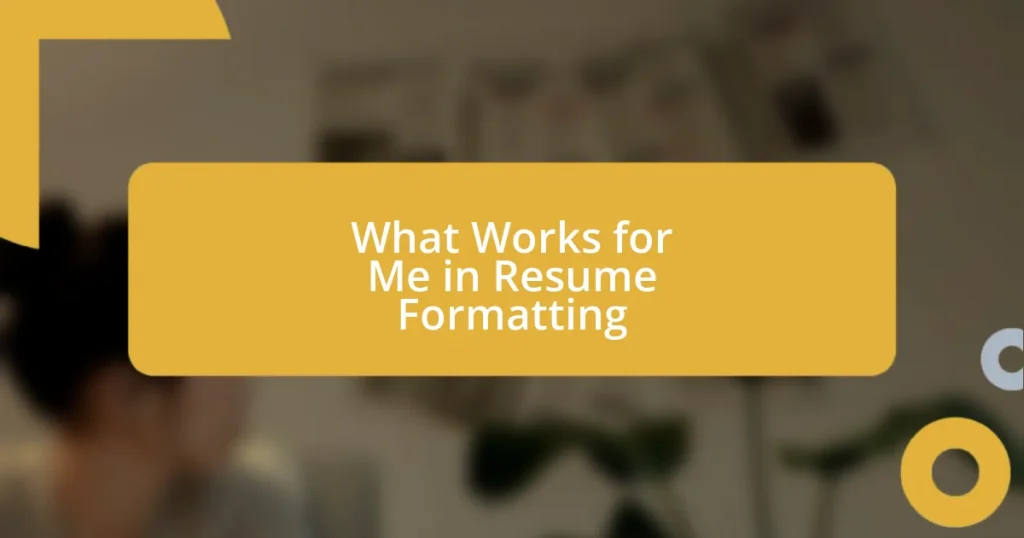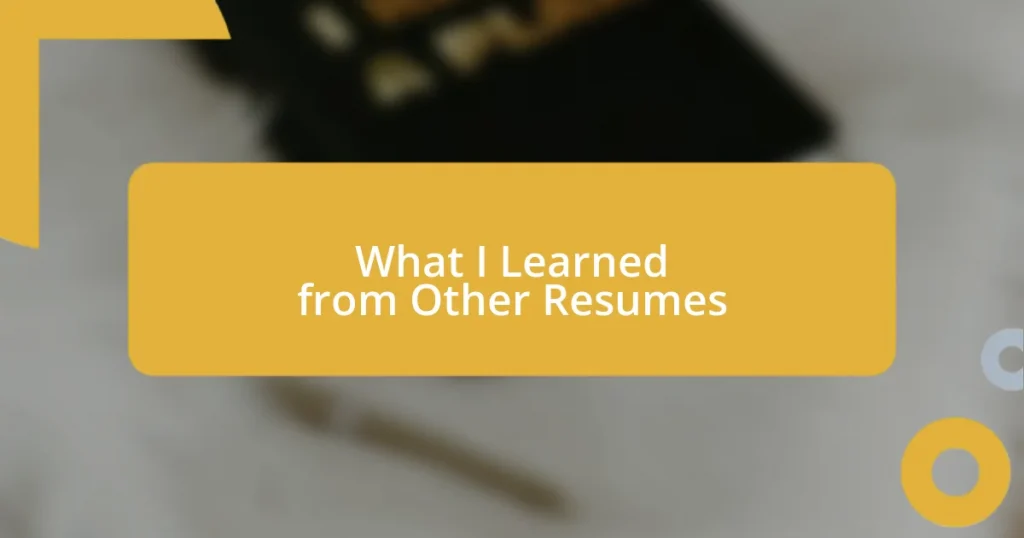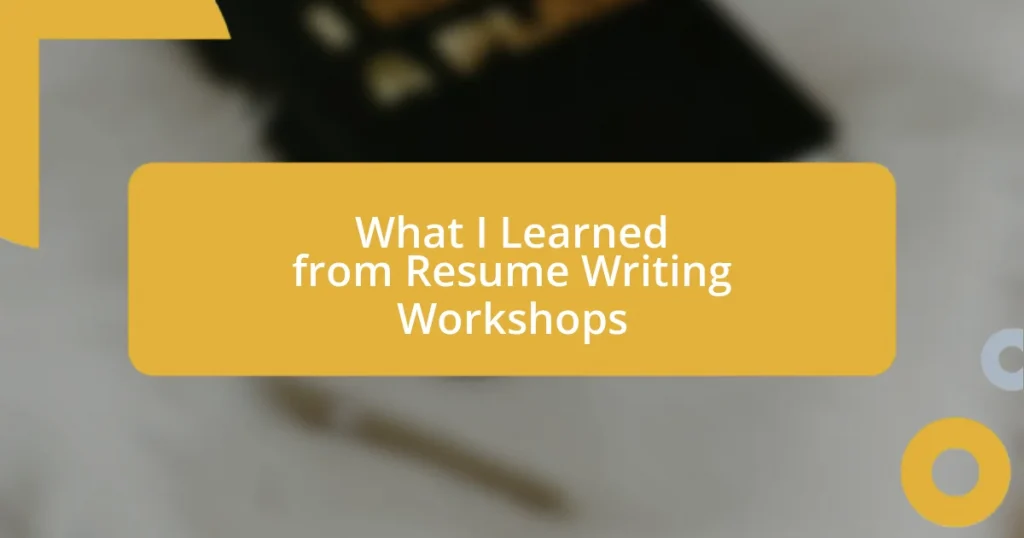Key takeaways:
- Restructuring resumes to highlight achievements rather than just responsibilities can significantly improve appeal to recruiters.
- Using clear formatting and professional fonts enhances readability, making critical information easily digestible for hiring managers.
- Incorporating actionable keywords and aligning them with job descriptions helps in passing Applicant Tracking Systems (ATS) and showcases compatibility with employer expectations.
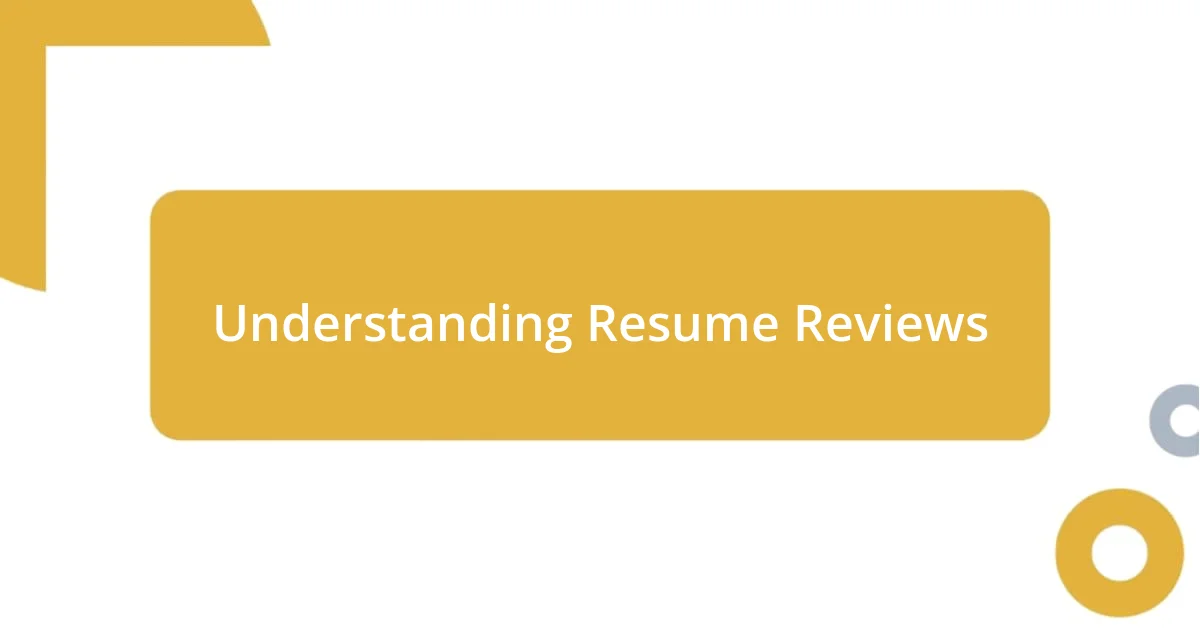
Understanding Resume Reviews
Understanding resume reviews is essential in today’s competitive job market. I remember my first job application; I felt lost sifting through feedback. It made me realize how crucial it is to see our resumes from an employer’s perspective. Have you ever wondered what catches a recruiter’s eye?
Typically, resume reviews focus on clarity, relevance, and impact. I once received feedback that my achievements were buried under a list of responsibilities. It was a lightbulb moment—highlighting outcomes can make a world of difference. I’ve heard countless stories of applicants who restructured their resumes and suddenly saw results, transforming a rejection into an interview call.
Moreover, understanding common pitfalls can help you avoid mistakes. I encountered issues with formatting that I thought were minor but caused confusion for reviewers. This experience taught me to pay attention to the small details that can lead to a polished presentation. Reflecting on your own resume: do you feel it truly conveys your unique story and strengths?
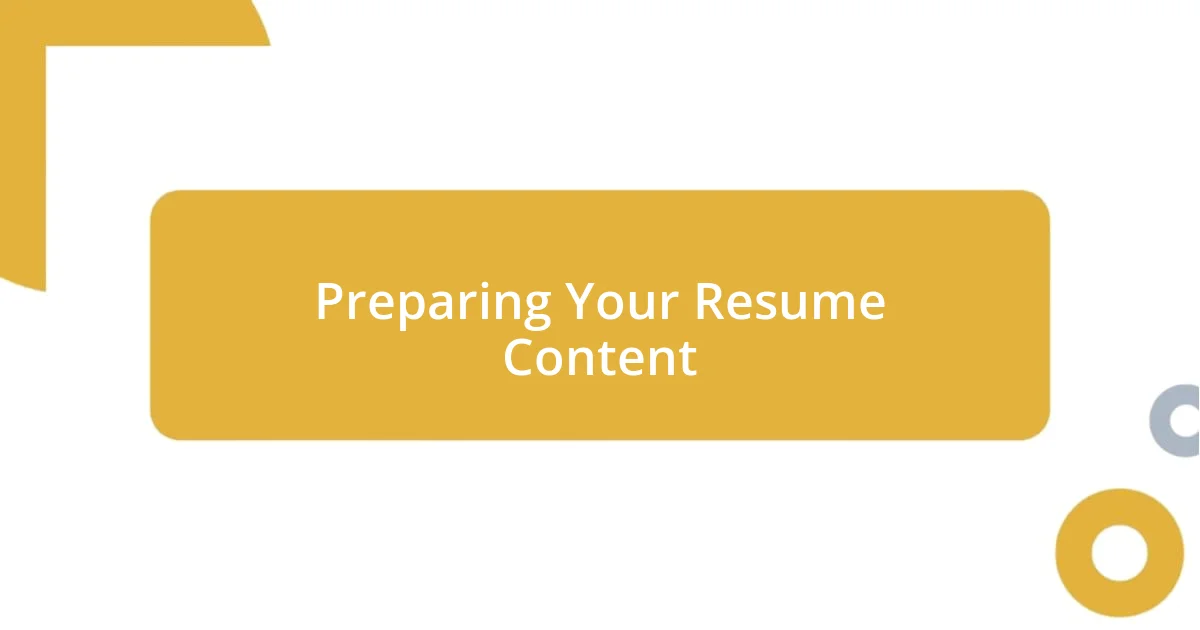
Preparing Your Resume Content
When preparing your resume content, clarity is key. I vividly recall a time when I rushed through updating my resume, only to receive feedback that it lacked focus. It was a humbling moment that taught me to prioritize the most relevant information. By carefully selecting the experiences and skills that align with the job description, I’ve noticed a stronger connection with recruiters.
Here are a few strategies to enhance your resume content:
– Tailor your resume to match the job description, highlighting specific skills and experiences.
– Use action verbs to convey your achievements, making them more dynamic and impactful.
– Quantify your accomplishments whenever possible; numbers can tell a story more convincingly than words alone.
– Keep it concise; aim for clear, bullet-pointed lists to improve readability.
– Avoid jargon unless it’s industry-standard; clarity will keep recruiters engaged and informed.
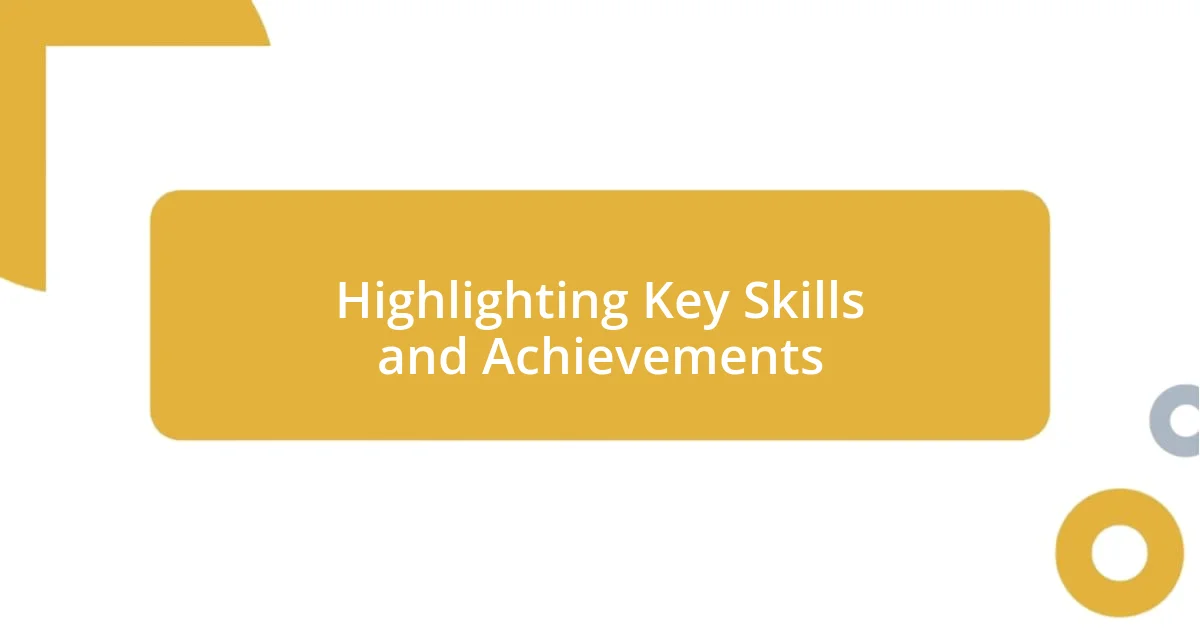
Highlighting Key Skills and Achievements
When highlighting key skills and achievements, the goal is to create a compelling narrative around your professional journey. I once revamped my resume by shifting focus from tasks to specific results I achieved. This simple change made my accomplishments pop! Recruiters began to reach out more frequently, as they could easily see the value I brought to previous roles. Have you ever thought about how your achievements could showcase your impact instead of just duties?
A well-structured resume showcases your most relevant skills first, making it easy for recruiters to spot what they need. I learned the power of prioritization while helping a friend remodel his resume; we arranged his technical skills and certifications at the top, catching the recruiter’s attention instantly. Those small tweaks can elevate your presentation dramatically and initiate conversations focused on what you truly excel at.
To ensure that your key skills shine through, match them with evidence of achievements. I often use the STAR method (Situation, Task, Action, Result) to outline my successes clearly. For instance, rather than saying I ‘managed a team,’ I emphasize that I ‘led a team of five to successfully complete a project ahead of deadline, saving the company 15% in costs.’ Incorporating concrete examples like this will not only highlight your skills but also verify your capability to deliver results.
| Original Description | Revised Achievement |
|---|---|
| Managed a team. | Led a team of five to successfully complete a project ahead of deadline, saving the company 15% in costs. |
| Worked on marketing campaigns. | Developed and executed a marketing campaign that increased customer engagement by 30% in three months. |
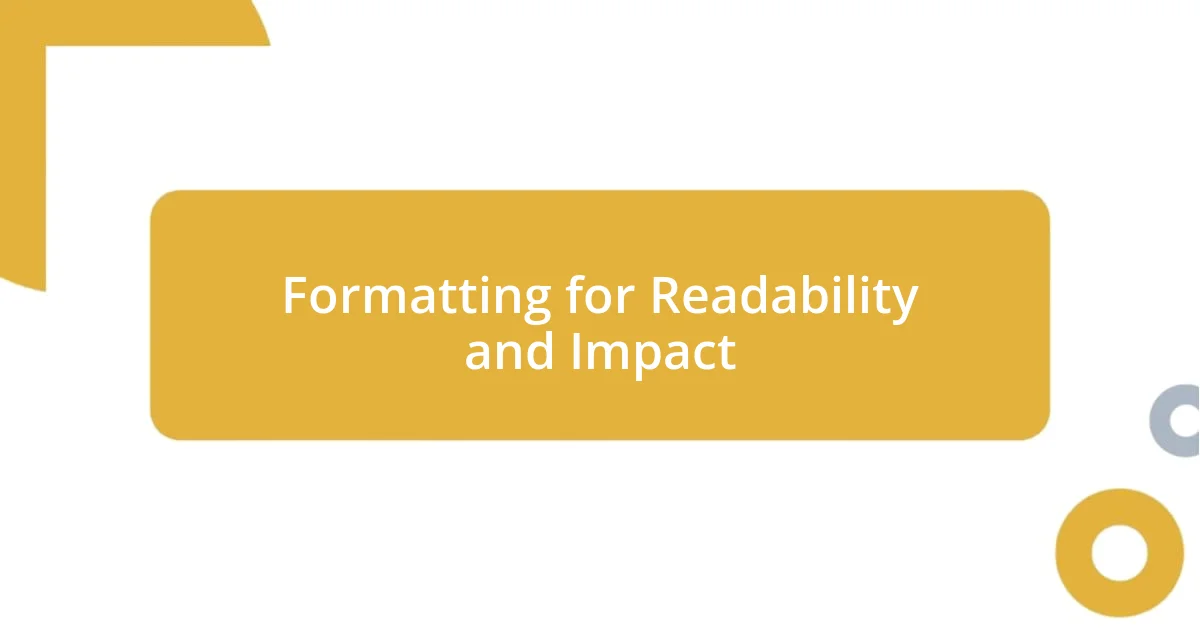
Formatting for Readability and Impact
When it comes to formatting for readability and impact, I’ve discovered that simplicity truly bears weight. There was a time when I thought flashier resumes with intricate designs would stand out; however, I learned the hard way that clarity wins the day. I utilize a clean, professional layout with ample white space, ensuring that my resume looks inviting rather than overwhelming. Have you ever stared at a wall of text and felt your eyes glaze over? That’s the last thing you want for your resume!
Choosing the right font is another aspect I’ve fine-tuned over the years. On one occasion, I opted for a highly stylized typeface, thinking it would show off my creativity. The feedback I received was eye-opening—it distracted from the content! Now, I stick to classic, easy-to-read fonts like Arial or Calibri, keeping the size between 10 to 12 points. This way, hiring managers can quickly absorb the critical information without squinting or losing interest.
Consistent formatting throughout my resume feels like the icing on the cake. I make sure to maintain uniformity in headers, bullet points, and spacing. This attention to detail might seem minor, but I can’t stress how much it matters. I recall helping a colleague who had a fantastic background but a jumbled resume. Once we standardized his formatting, his qualifications shone brightly, and he finally started getting interview calls. Isn’t it amazing how such an approach can transform a resume from average to extraordinary?
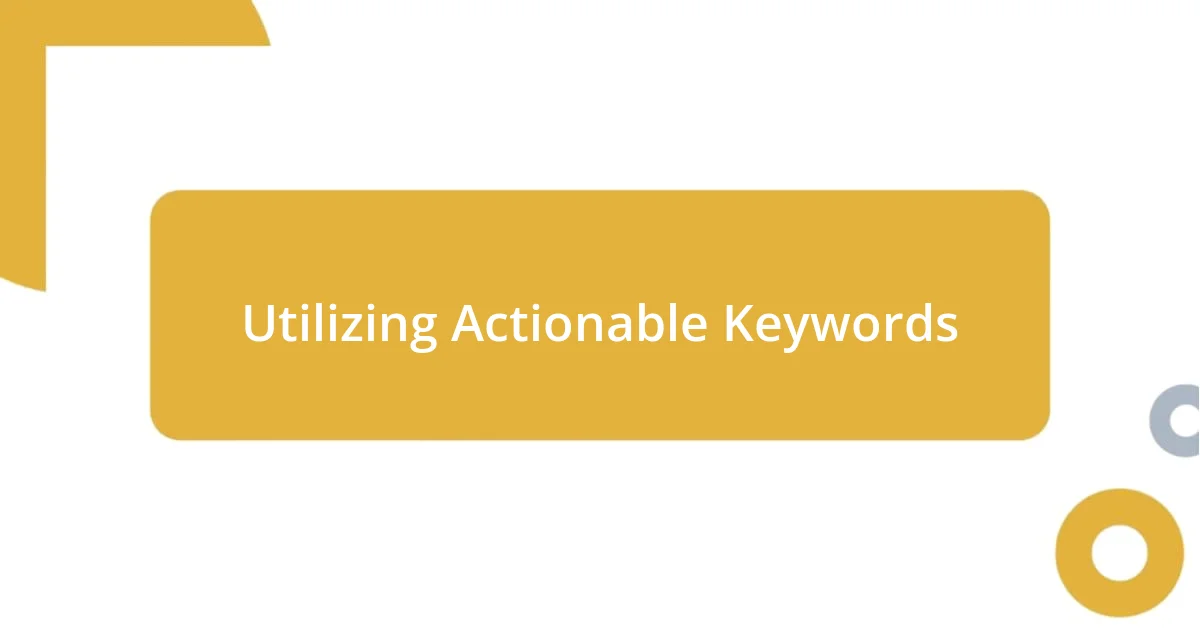
Utilizing Actionable Keywords
Utilizing actionable keywords can truly transform your resume into a magnet for potential employers. I took my time to research relevant industry terms, and it was fascinating to see how a simple keyword could encapsulate so much. For instance, instead of just listing “project management,” I opted for “strategic project management,” which highlights a proactive approach. Have you explored keywords that elevate your skills in similar ways?
In my experience, I found it valuable to align keywords with the specifics of job descriptions. When I was navigating a career transition, I meticulously reviewed postings for my target role. By identifying dominant phrases and incorporating them into my resume, I managed to bridge the gap between my experience and what employers were looking for. This strategy not only showcased my compatibility but also helped my resume pass through Applicant Tracking Systems (ATS), which often filter resumes based on keyword matches. Isn’t it rewarding to think that a few carefully chosen words can open so many doors?
One powerful tool I often suggest is to use action verbs alongside these keywords. For example, rather than saying I “assisted with” a project, I started saying I “engineered innovative solutions” for challenges we faced. This slight shift not only enhanced my resume but also redefined how I viewed my contributions. I encourage you to experiment with your language, as the right keywords paired with decisive actions can truly illuminate your potential. Have you considered how you might redefine your past experiences with impactful language?
